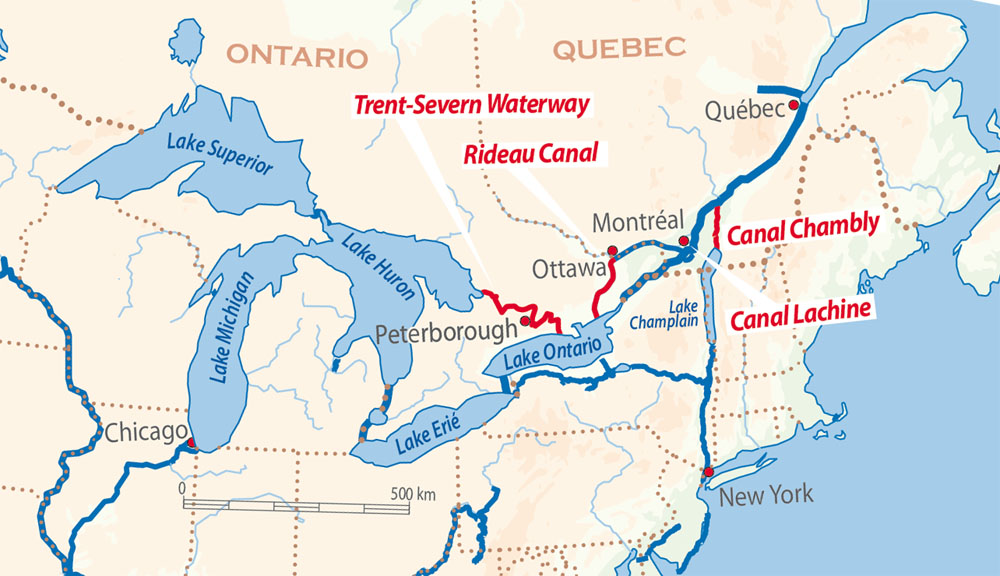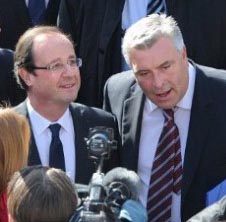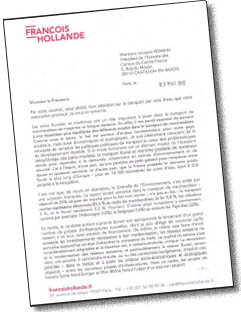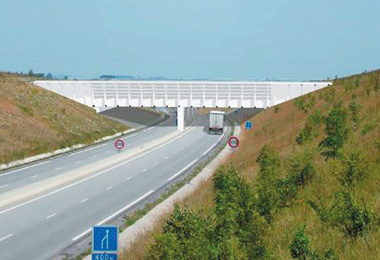Vive VNF under its new statute as a public administration! Following the successful public consultation process, the State body is expected to start works on enlarging the Creil-Compiègne section of the river Oise to European Class Vb capacity. The works are needed to harmonise navigable dimensions throughout the Seine-Scheldt waterway. The public consultation was completed successfully in 2012, and aspects of the project were then debated at three “post-consultation” workshops in December. The first covered all hydraulic aspects, the flood risk and highest navigable water level, the second was devoted to the various uses of the inland waterway, while the third discussed all environmental aspects.
Category Archives: Policy
Canada’s canals escape cuts
Good news for Canada’s Historic Canals! The length of the navigation season and the hours of operation of Parks Canada’s historic canals will see little changes in the 2013 season. The length of season will remain the same, with some operational adjustments in the shoulder season. This is very good news for the communities, businesses, and users of the waterways under Parks Canada’s jurisdiction. The announcement by the Minister of the Environment is reproduced below.
Our congratulations to the Minister and Parks Canada is recognizing the importance of these historic waterways. Hopefully this will also be recognized as they follow through on their reorganziation models, ensuring the natural and cultural heritage is protected and the importance of the water management and telling the story are also noted and taken into account.
Dave Ballinger, 23 October 2012
Minister Kent announces 2013 navigation season for historic canals and Trent-Severn Waterway
OTTAWA, Ontario, October 18, 2012 -The Honourable Peter Kent, Canada’s Minister of the Environment and Minister responsible for Parks Canada, today announced the 2013 navigation season for historic canals and Trent-Severn Waterway.
“National Historic canals are a defining feature of Canada, and provide communities and regions with beauty, recreation and a unique sense of history,” said Minister Kent. “I am pleased to announce that the 2013 navigation season will continue from Victoria Day to Thanksgiving, as in previous years.”
“Parks Canada will continue providing ‘upon arrival’ services throughout the peak summer period, and offer a modified service seven days a week through scheduled lockages in the spring and fall period. For the canals 2013 navigation season, Parks Canada will align its hours of operation and personal service offer to better reflect patterns of use, offering between 7 and 9 hours of service per day.
“With this decision, the canals and the surrounding communities will continue flourishing as a vibrant centre of our regions,” added Minister Kent. “The government appreciated the constructive feedback we received from the public, and was pleased to work with the local Members of Parliament, Mayors, business leaders, and stakeholders, to determine a workable schedule going forward that is affordable while minimizing the impact on the local economies and visitors.
“Parks Canada will continue its stewardship of cultural and environmental resources providing meaningful experiences that promote understanding and appreciation of Canada, and supporting local communities through tourism – as it has done for the last 100 years.”
Canada’s canals reorganized
Dave Ballinger reports on the changes that are taking place on Canada’s historic canals.
Parks Canada enjoyed a well deserved reputation in the world as an excellent operator, manager and guardian of Canada’s historic canals. However that is about to change. As part of the incumbent government’s deficit cutting program, Parks Canada seems to have an agenda when it comes to the canals under its responsibility. In the last few days many staff have been told who is surplus to the organization. Many of the positions identified are positions that one would consider as important or key to fulfilling the mandate, including water control and resource protection, to name just a couple.
It is understood that there will be one Superintendent for the two canals in Ontario who will be located in Peterborough. There appears to be joining of various functions and they will be located on either the Trent-Severn Waterway or on the Rideau. The question becomes very clearly: is this doable and if not, then what?

The main historic canals managed by Parks Canada in Ontario and Quebec (from Euromapping study for IWAC, UK)
As the information becomes available in ‘dribs and drabs’ it is difficult to get a good understanding on what the canals will look like into the future and what their roles and responsibilities will be with what is emerging as a new organization.
Parks Canada in the past has been relatively transparent when it has had to make changes. It was a model for doing public and employee consultation. However that is not the case this time. Severe changes to carrying out the mandate are being proposed and implemented, along with major changes to the organizational structure and way of operating including the announcement of the coming reduction in level of service. All of this has been done without any or minimum input. There have been limited public announcements from Parks Canada. The only announcement was by a Vice President through the media that there would be no consultation. This is certainly a new approach for this organization, which was a model in providing information and consulting in the past no matter how bad the news.
So what’s next? We know that at the end of August the lock operating and maintenance staff will be told about their jobs. Also we will find out what the level of service will be. So this sad saga is not over yet and as these changes are implemented one has to wonder and be concerned if any of these major organizational changes will also have any implications for things such as the World Heritage designation for the Rideau Canal in the longer term.
Dave Ballinger
More EU funds for new canal?
The Seine-Nord Europe Canal project is still alive!
The proposed Seine-Nord Europe Canal will create a high-capacity freight corridor from Le Havre to northern France, the Benelux countries and the Rhine, for a cost estimated at €4.3 billion, of which €2.1 billion to be funded by a private partner. The selection process with the two declared candidates for building and operating the canal – Bouygues Travaux Publics and Vinci Concessions – is expected to be completed by the end of 2012.
Of course there are reasons for concern. The economic outlook is bleak, as France prepares for her austerity diet, and there is no shortage of bad omens. Everybody I’ve spoken to since the change in government has expressed fears for the 106km-long new canal, despite its trans-European character. A transport ministry memo tabled the option of cancelling the project. But the Seine-Scheldt link is still Project 30 in Europe’s transport infrastructure programme!

President François Hollande and Minister for Transport and Maritime Affairs Frédéric Cuvillier - ©LeMoniteur.fr
Transport Minister Frédéric Cuvillier, interviewed on June 23, was critical of the project’s funding model, which appears to have overestimated the ability of the future private-sector partner to put up one fifth of the investment cost in return for the operating revenue (tolls) over a 40-year concession. Both the previous government and VNF were discreet on this subject in the run-up to the elections, but the reality today is that the funding package is short of target by around €2 to 2.5 billion.
The minister underlined that major infrastructure projects, such as the Lyon-Turin rail link or the Seine-Nord Canal, “can only go ahead if the European funding is guaranteed at a reasonable level.” To date, the anticipated EU funding of the investment has been fixed at about €330 million, or less than 8% of the total investment. In view of the growth package negotiated by European leaders, part of which involves spending unallocated funds on infrastructure projects, it is felt that a strong case can be made for stepping up the EU’s share to 20% or even more. Getting the project under way despite such unfavourable circumstances would send a very strong message about Europe and the capacity of member states to plan for the long term.
Rumours of abandonment of the project, which VNF has been working on intensely since it was founded in 1991, were fuelled by political as well as economic arguments. The greens have always been luke-warm about new waterway links. They accept the argument that waterborne transport is the most energy-efficient and least pollutant mode, but they are convinced that rail provides an equivalent service, and that railway investments should take priority.
Already in a report produced in 1997 for the mayors of Lyon and Marseille, I predicted that the increase in passenger movements by rail would threaten the capacity of rail to handle freight economically. Today the case is proven, as the railway lobby in France is pushing for the construction of no less than 1000km of new railway lines, to give rail solutions a chance of competing with the alternatives. But this competitiveness could only be obtained by direct or indirect subsidies which are contrary to EU policies and decisions. By contrast, the waterway lobby has been pressing the case for infrastructure improvements with a more balanced approach, recognising the value of road and rail in combined transport solutions.
Since the June 23 interview there has been a clash between the Transport Minister and a predecessor in the previous government Jean-Louis Borloo, incidentally instigator of the Grenelle round table on the environment.
Setting aside the party politics and the inevitable rhetoric on both sides, the fact is that a new funding package is now to be assembled, and submitted to the European Commission at the end of the year. The increased EU funding would be matched by an additional effort by the regions benefiting from the new infrastructure.
François Hollande favours inland waterways
French president François Hollande supports inland water transport as a carrier of freight to and from the country’s struggling seaports. While still a candidate in the second round of the presidential election, he signed on May 2nd a letter to two waterway organisations indicating a firm intention to revive the Environmental Policy initiated and then abandoned by the previous government, to transfer more freight from road to rail and water. IWI‘s February Newsletter featured the letter from Jacques Romain, president of the Entente des Canaux du Centre France, to all 10 candidates for the presidential office. A similar initiative was taken by the French barge-owners through their representative body, the Chambre Nationale de la Batellerie Artisanale.
 The letter, of which an English translation has been produced by DBA–The Barge Association (click on thumbnail, left), sets out the candidate’s objectives for transport and inland waterways, and underlines the importance of investment in infrastructure to ensure competitivity of intermodal solutions to and from the main seaports: Marseille, Le Havre and Dunkirk. The ports (and industry) are handicapped by the unsatisfactory waterway links to the hinterland, as a result of which, for example, 85% of freight movements to and from the port of Marseille are by road.
The letter, of which an English translation has been produced by DBA–The Barge Association (click on thumbnail, left), sets out the candidate’s objectives for transport and inland waterways, and underlines the importance of investment in infrastructure to ensure competitivity of intermodal solutions to and from the main seaports: Marseille, Le Havre and Dunkirk. The ports (and industry) are handicapped by the unsatisfactory waterway links to the hinterland, as a result of which, for example, 85% of freight movements to and from the port of Marseille are by road.
Water transport still only accounts for 2.2% of inland freight movements in France, compared with 12% in Germany, 16% in Belgium and 33% in the Netherlands. The policy statement refers to both the Seine-Nord Europe Canal and the Saône-Moselle.Saône-Rhine waterways, ‘to be the subject of careful study’, and to the principle of a pollution tax contributing to the funding of new investments. He stigmatises the previous government’s failure to implement the ‘Grenelle Round Table’ measures, aimed at increasing the share of rail and water to 25% of total freight movements.
The Entente (with its member DBA–The Barge Association) and the CNBA are to be congratulated for their initiative. Although the response is that of a candidate seeking votes, with all the caveats that implies, it is evidence of a position that is totally supportive of inland waterways. There will doubtless be occasions to remind President Hollande and his government of the candidate’s policy statement.
Header images from CNBA’s new web site
Seine-Nord tolls debated
Barge owners and operators will contribute up to half of the cost of building the 106km long Seine-Nord Europe canal through the toll levied by the canal’s future private-sector operator.
Two approaches were discussed at a meeting on April 18 in Ghent, bringing together VNF, Waterwegen & Zeekanalen (Flanders) and Service Public de Wallonie (Wallonia).
The first, proposed by the project partners, involves charging more for goods that are ‘captive’ or most likely to be carried by water, such as agricultural products, bulk minerals and metals, and less for goods more difficult to win from road and rail, such as containers.
The carriers argued on the contrary for a toll indexed on the value of the cargoes.

Route of the Seine-Nord Europe Canal, close to the existing Canal du Nord, which will be abandoned except for the short connecting length with four locks north of Péronne
The proposed tolls range from €2 to €4.90 per tonne, according a report in the French magazine NPI – Navigation, Ports & Intermodalité.
These tolls were set at a level corresponding to 30% of the saving in transport costs offered by the canal.
This means that the carrying industry will retain 70% of the benefit of the reduction in transport costs.
It remains to select the private-sector partner to design, build and operate the waterway, although the competitive dialogue process should be completed in the coming weeks.
Watch this space!
Canals and waterways worldwide…
… and all who use them!

Welcome to IWI’s blog! The association, founded in 1995*, aims to raise awareness of the value of navigable rivers and canals in many of the densely-populated regions of the planet. Lobbying for governments’ attention and spending on waterways for moving freight and all their other functions is a constant challenge. The other transport modes carry more weight in corporate terms, while tourism and recreational uses are considered by many decision-makers as ‘secondary’ functions, to be planned and managed at the regional or local level. So not only are we in a minority as voters in elections, we are also promoting widely differing types of waterway and economic uses, with separate political levels of responsiblity and decision-making!
In this situation, where inland waterways are ‘off the radar’ of most politicians, and often only partially on the radar of the others, communication is critical to achieving our objectives. We hope that this blog will contribute to strengthening the links among like-minded people and organisations. It’s also about a certain philosophy, a way of appreciating unique cultural landscapes and environments that we have on our doorsteps, at the same time supporting the ongoing use of waterways for transporting goods, as lifelines for industry. This means new, larger canals and locks or lifts, and building missing links in Europe, Asia, North and South America, Africa, where justified in economic and environmental terms.
As with any lobbying organisation, a lot of work is conducted behind the scenes. All who wish to join in are more than welcome! Details on our Membership page. These public pages will cover a wide range of topics, many derived from the web sites we have been managing for the last 15 years.
We look forward to working with you in furthering the cause of sensible spending to build and maintain inland waterways for their many economic, environmental and social benefits.
* from the International Committee of the Inland Waterways Association, UK, founded by the late Ronald W. Oakley



